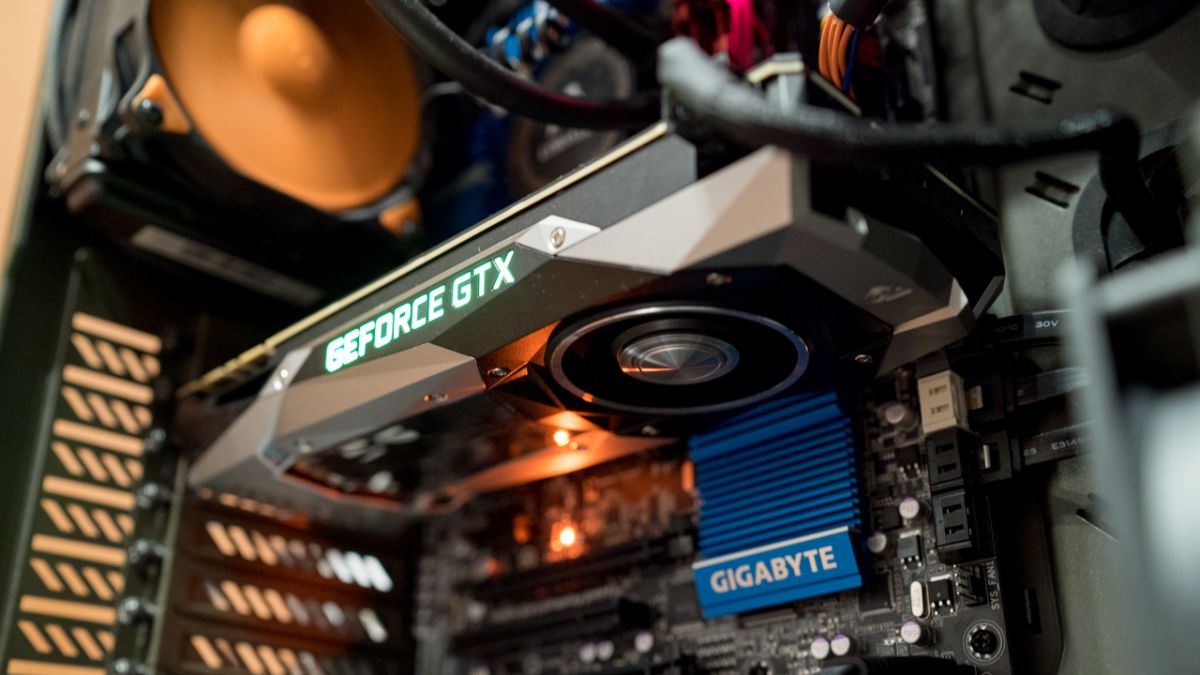
Nvidia GeForce GTX 1080
The future of PC gaming has arrived. You’ve heard a line like that almost annually as the new graphics cards from Nvidia and AMD are released. The Nvidia GeForce GTX 1080, the chip maker’s first consumer product to run its new Pascal chip architecture, is not necessarily the future of PC gaming.
But, it sure as hell could be the vessel to take us there. Even if not, it’s still a remarkable upgrade.
I can tell you this much from running the card through a scant few benchmarks against one of Nvidia’s flagship graphics cards of last year: the GTX 980 Ti. That is, not to mention looking at the thing. I mean, what else can I say – it’s a chip that powers graphics.
[Editor’s Note: For an exhaustive critique, watch this space for a full review later this week.]
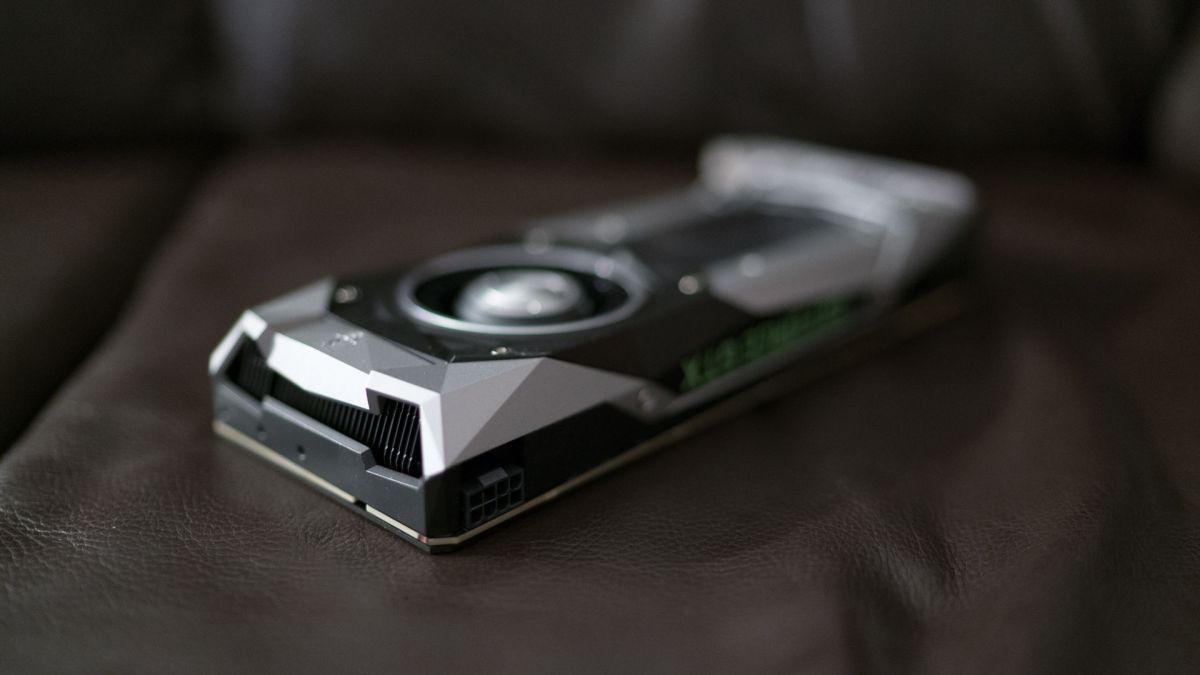
Design
The shroud in which Nvidia’s mighty chip resides in isn’t terribly different from last year’s stock cards. Though, the new gunmetal-colored, die-cast aluminum body sports even more “extreme” angles than, say, the rounded edges on the reference GTX 980 Ti.
This is the kind of gadget you’d expect to see the villain of a sci-fi flick slam into his console on the deck of the mothership before screaming, “Fire!”
Naturally, massive heat sinks are teased beneath a window of plastic, and the same intake fan that Nvidia has been using for a while now sits embedded into the frame. (Designed with a blower-type cooler, hot air shoots out of the back of the graphics card.)
Nvidia calls this method “advanced vapor chamber cooling.” The low-profile (and removable) backplate and (not removable) circuit board provide clear pathways for hot air to escape efficiently. Even from my brief time with the card so far, the immense heat emanating from the rear of this card when under load proves it certainly works.
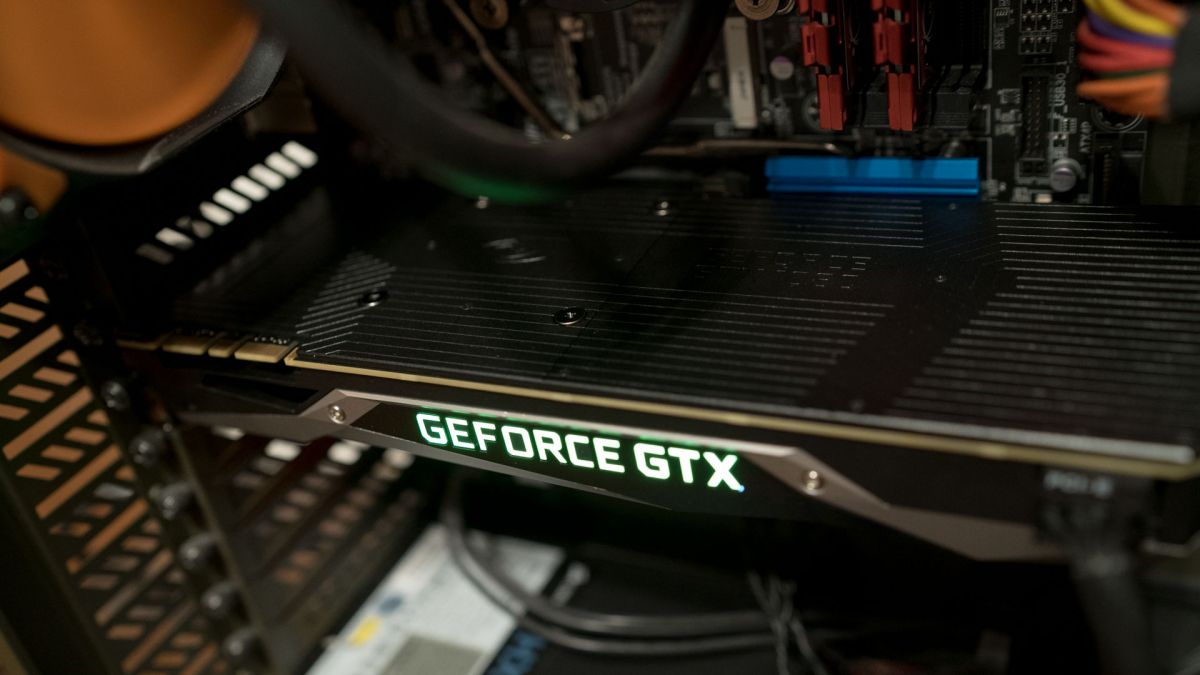
The firm also touts an upgraded power supply (up to a 5-phase, dual-FET design from a 4-phase one) that reduces sound pollution while upping efficiency by roughly 6% over the now-old-hat GTX 980.
All in all, the reference card – now known as “Founders Edition” – of the GTX 1080 is a gorgeous, in-house-built component that will add hundreds of cool points to any self-respecting windowed chassis.
Does its thermal design actually have a leg up on what Nvidia’s partners can muster? That’s still too early to tell. At the very least, Nvidia’s solution makes a lot of sense.
Performance
So, what does Nvidia’s latest and greatest get you where it counts: the numbers? As mentioned above, I ran some benchmarks against both the GeForce GTX 1080 and last year’s GTX 980 Ti.
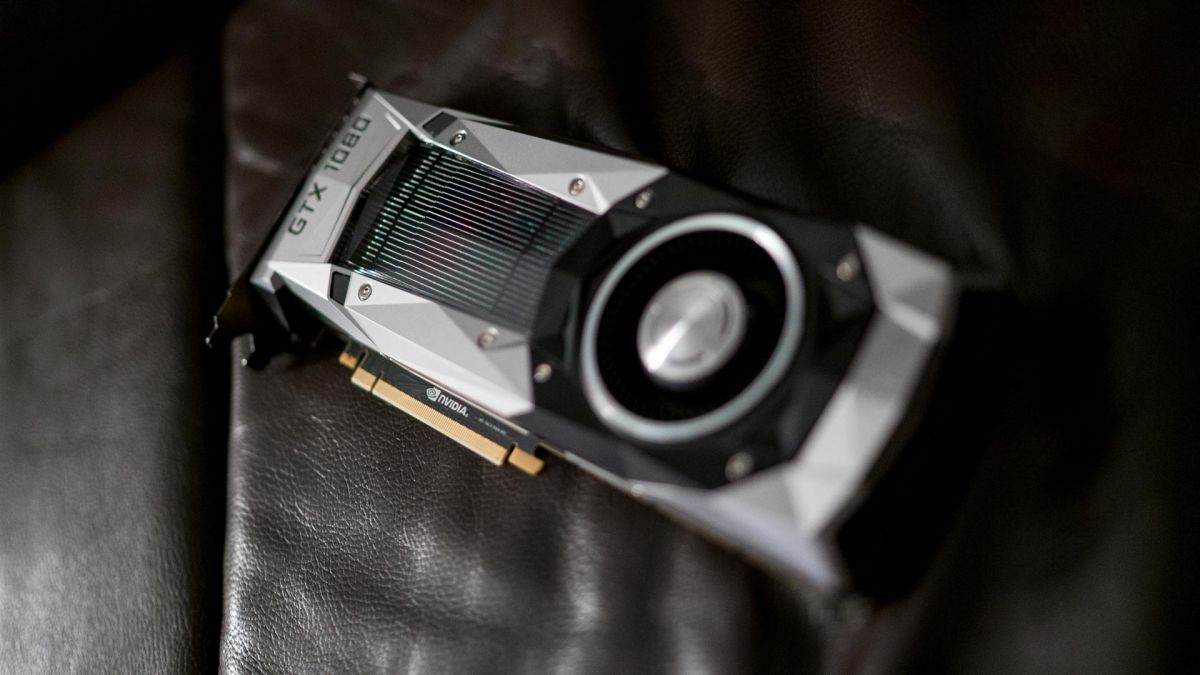
To keep things on an even playing field and represent the majority of PC gamers, these tests were run at 1080p resolution, sticking with 3DMark Fire Strike and Ultra settings in our normal game benchmarks (on this machine). Again, for a more thorough look into this card’s 4K and VR prowess, and even SLI performance, stay tuned later this week for our full review.
Let’s start with the GTX 980 Ti’s results before seeing exactly how far Nvidia has come:
GeForce GTX 980 Ti benchmarks
- 3DMark Fire Strike: 13,646
- Cinebench OpenGL: 145 fps
- PCMark 8 Home: 3,659
- Grand Theft Auto V (Ultra): 53 fps
- The Division (Ultra): 85 fps
There’s not much to say about these numbers than that you’re likely to enjoy a largely dope gaming experience at the highest settings in almost all games. (GTA V is a bit of a beast, hence why we use it as a benchmark.) This card would also handle VR gaming easily.
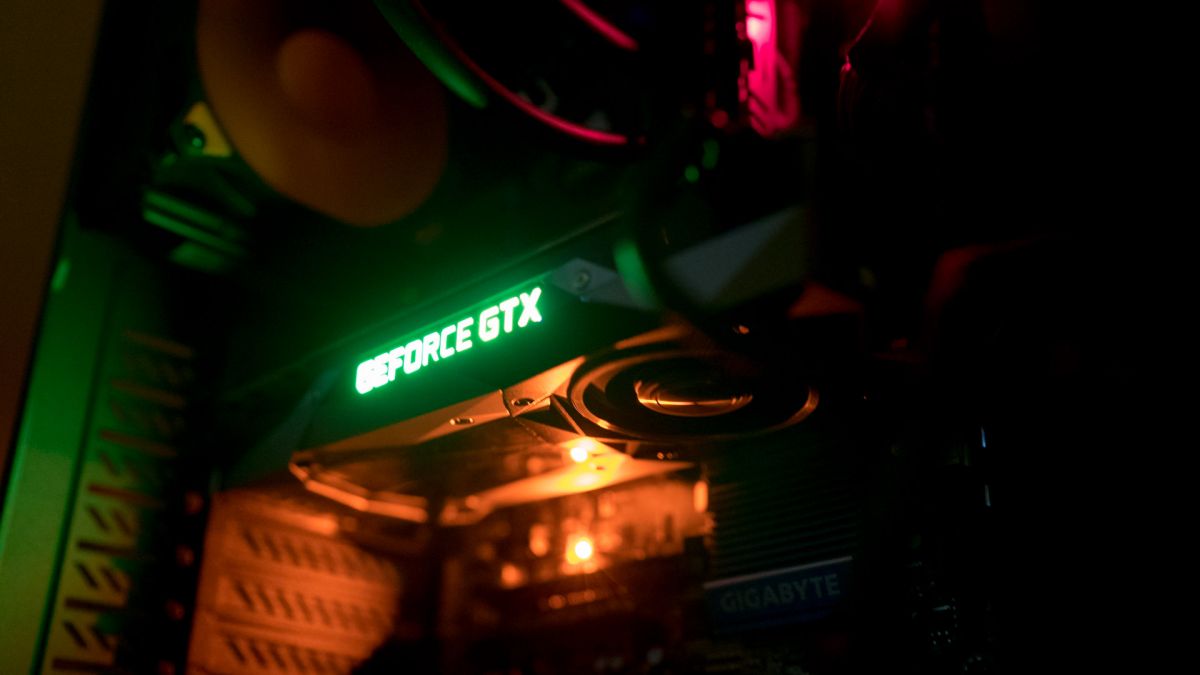
However, if you want absolutely no question of whether your machine can run the latest games at their maximum settings, it’s looking like the GTX 1080 is your answer. Here’s how the GTX 1080 performed on those same benchmarks at the same settings:
GeForce GTX 1080 benchmarks
- 3DMark Fire Strike: 16,336
- Cinebench OpenGL: 143 fps
- PCMark 8 Home: 3,955
- Grand Theft Auto V (Ultra): 66 fps
- The Division (Ultra): 107 fps
Save for an anomalous OpenGL rating, the improvements Pascal affords are obvious. You’re looking at a card that can handle one of the most demanding PC games of the past few years at its highest settings with nary a sweat.
For you numbers nuts, that’s nearly a 20% increase in performance in the 3DMark Fire Strike test, a 24% boost in frame rate in GTA V and a nearly 26% gain in The Division performance. This is surely thanks in part to Nvidia’s use of the brand new GDDR5X memory (still 8GB, mind you).
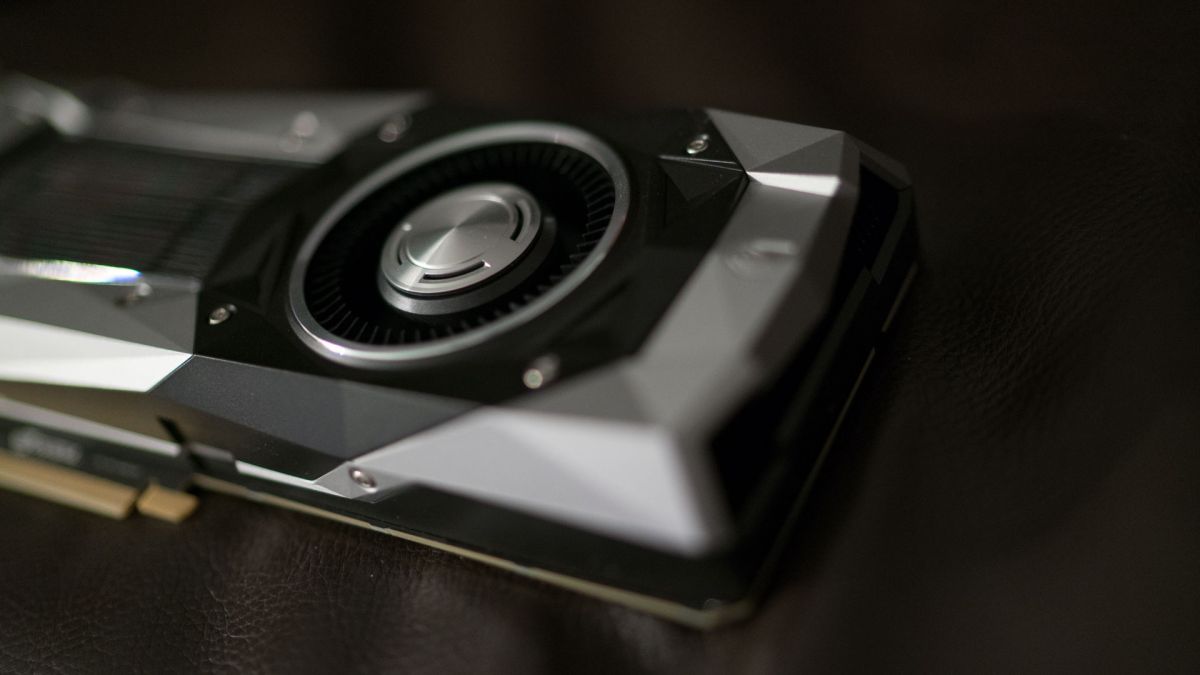
Nvidia’s implementation – which it calls “G5X Memory” – of this new technology ups the memory data transfer rate from 7 Gbps in the GTX 980 Ti to a whopping 10 Gbps in the new card. That’s about 43% more Gigabits of data being processed per second than before.
Oh, and massive processor clock speed improvements certainly contributed to these increases, too. The GTX 1080 rests – rests – at 1,607MHz and can be boosted to as fast as 1,733MHz. Nvidia’s stock card for last year runs at just 1,000MHz normally and up to 1,075MHz boosted.
These figures are nothing to scoff at, but whether they’re worth dropping another $599 (about £415, AU$813) – $699 (about £484, AU$949), if you want this specific model – for is up to you entirely.
Early verdict
Nvidia’s latest is indisputably (and unsurprisingly) its most powerful graphics card yet. And, with three DisplayPort connections, it’s more than enough to power a serious, three-screen gaming setup, not to mention 4K and VR gaming, with ease.
Now, is the Founders Edition of this graphics card worth it? Even being a hands on review, I’m inclined to say that, unless you want maximum visual appeal from your gaming rig, probably not. Besides, it’s only a matter of time before Nvidia’s partners, like MSI and Asus, hit shelves with overclocked versions of this card for less than 700 bucks.
None of this is to say that Nvidia hasn’t built an incredibly powerful and gorgeous piece of machinery, of course. With VR and 4K gaming on the rise, Nvidia is clearly well-equipped to handle the next phase of PC gaming. See just how much so in our forthcoming full review.
Source: techradar.com










































Neither card is worth it …
it just so happens that the FE adds insult to injury.
Neither card is worth it? What a troll ..
the Ti's were over 1000 dollars when released….